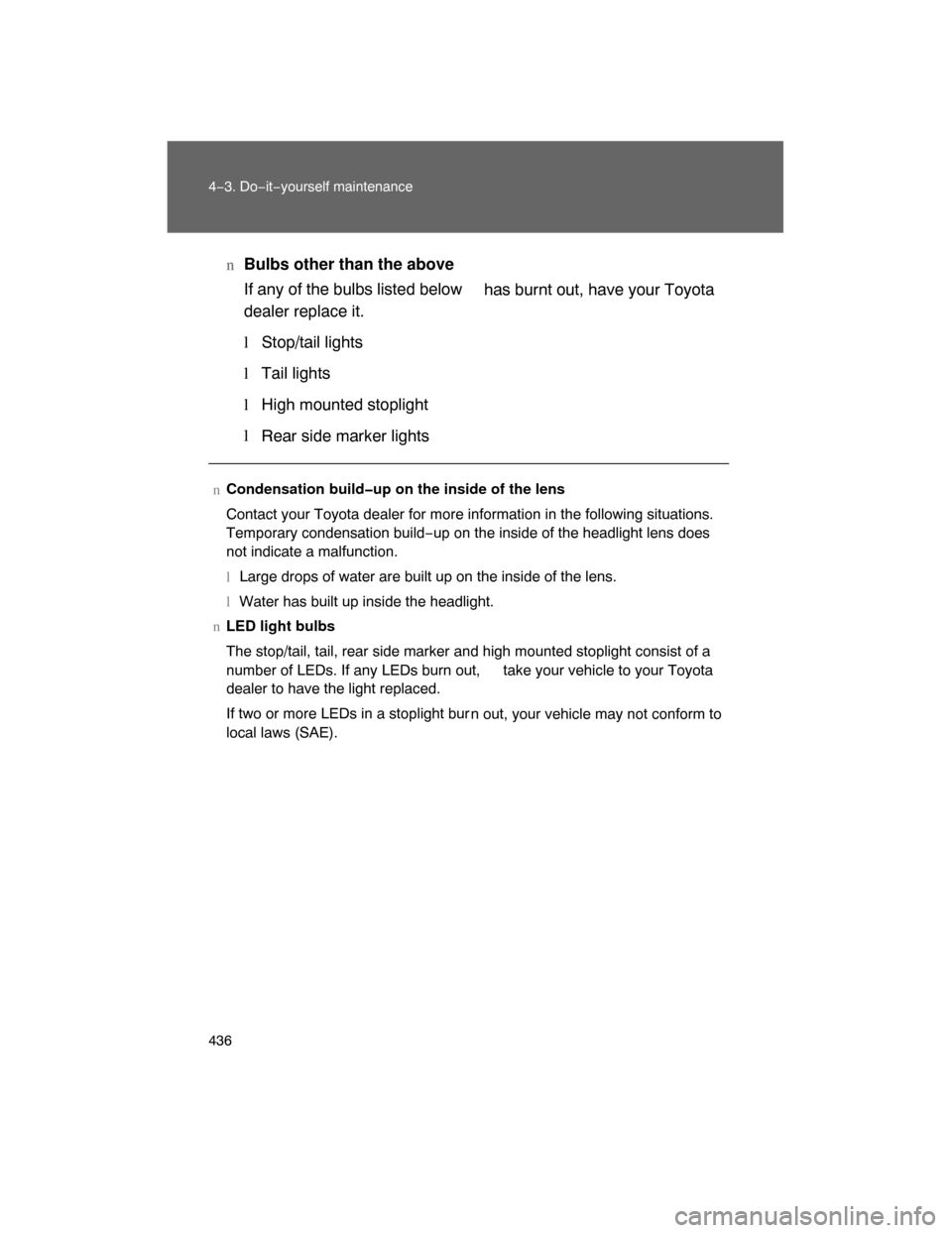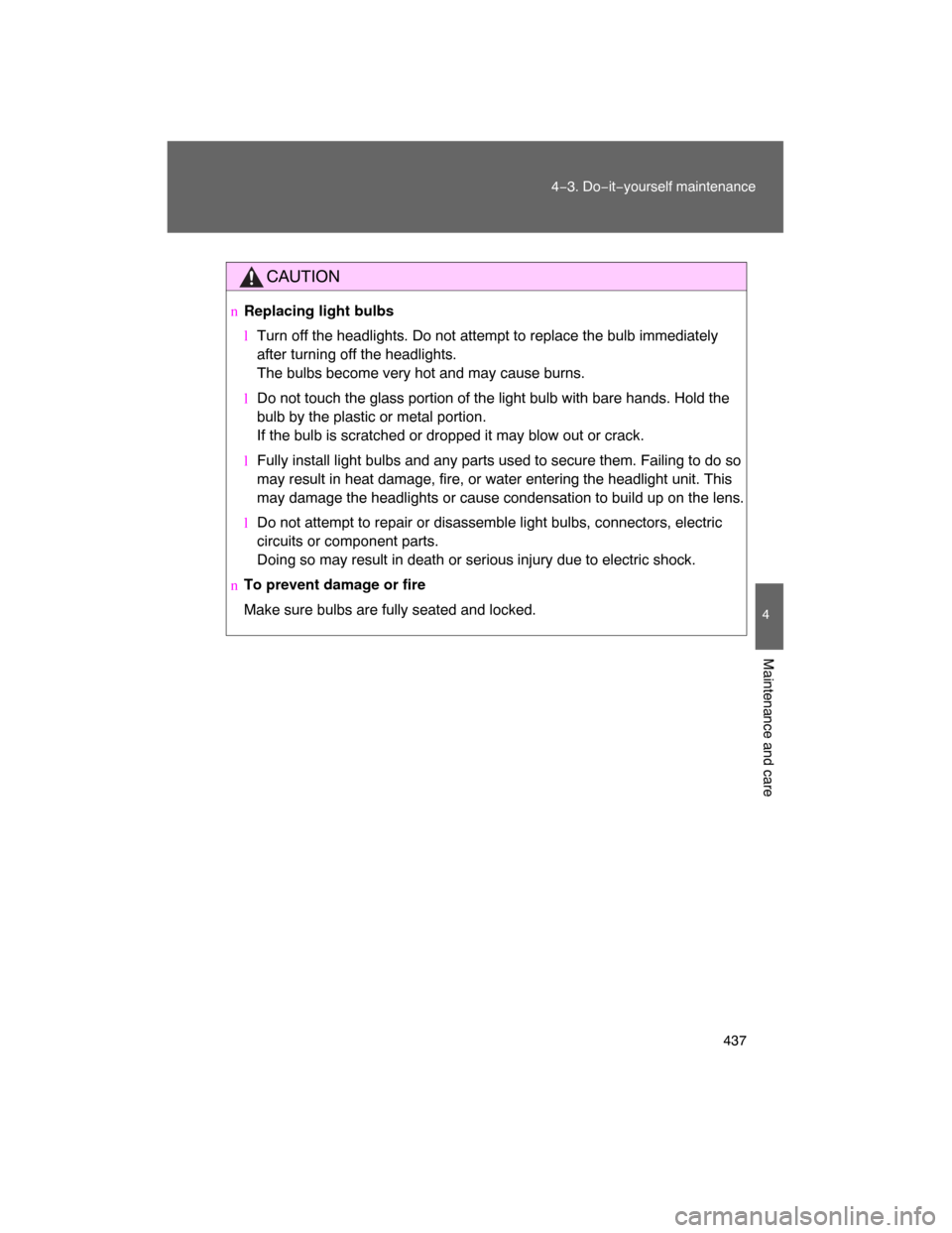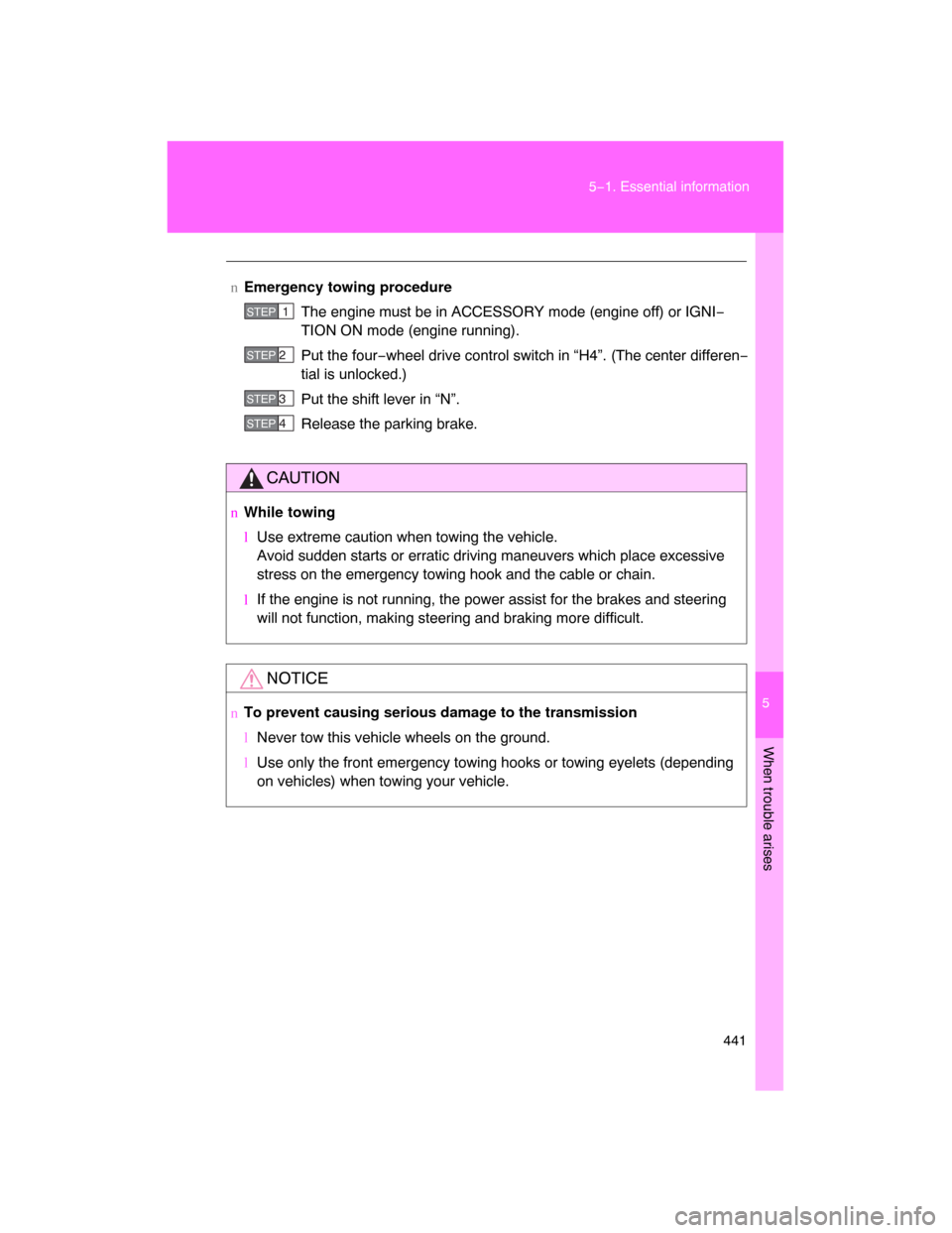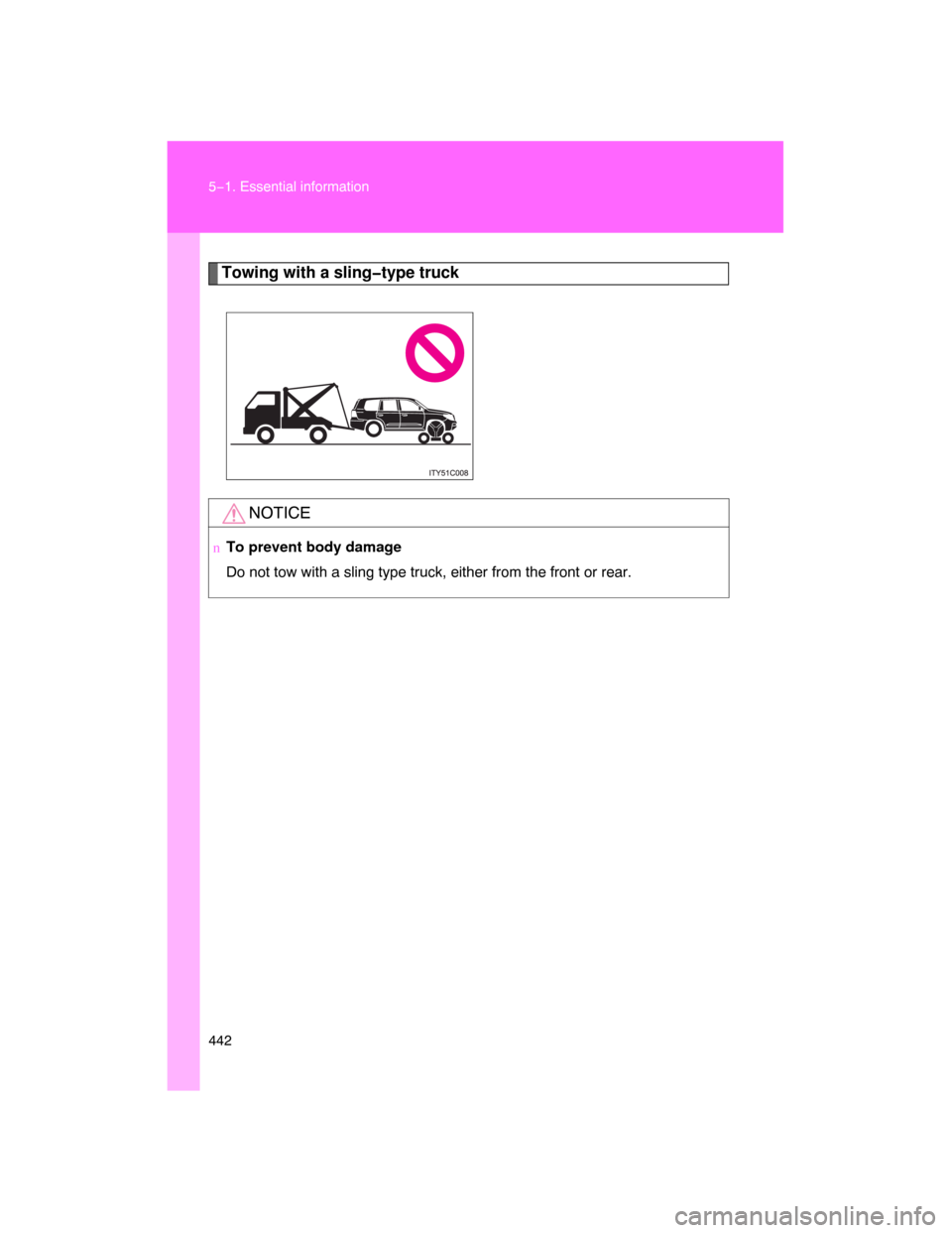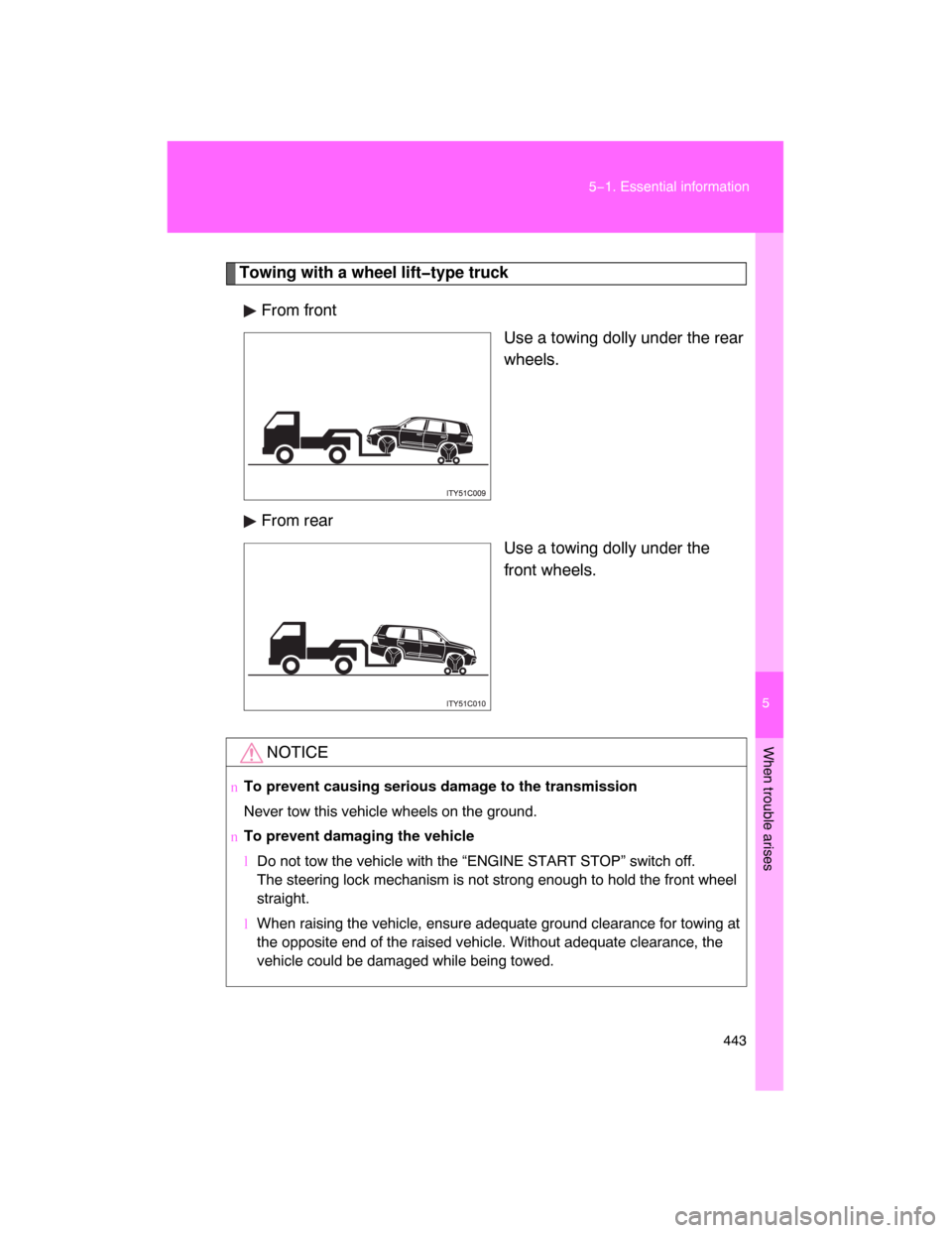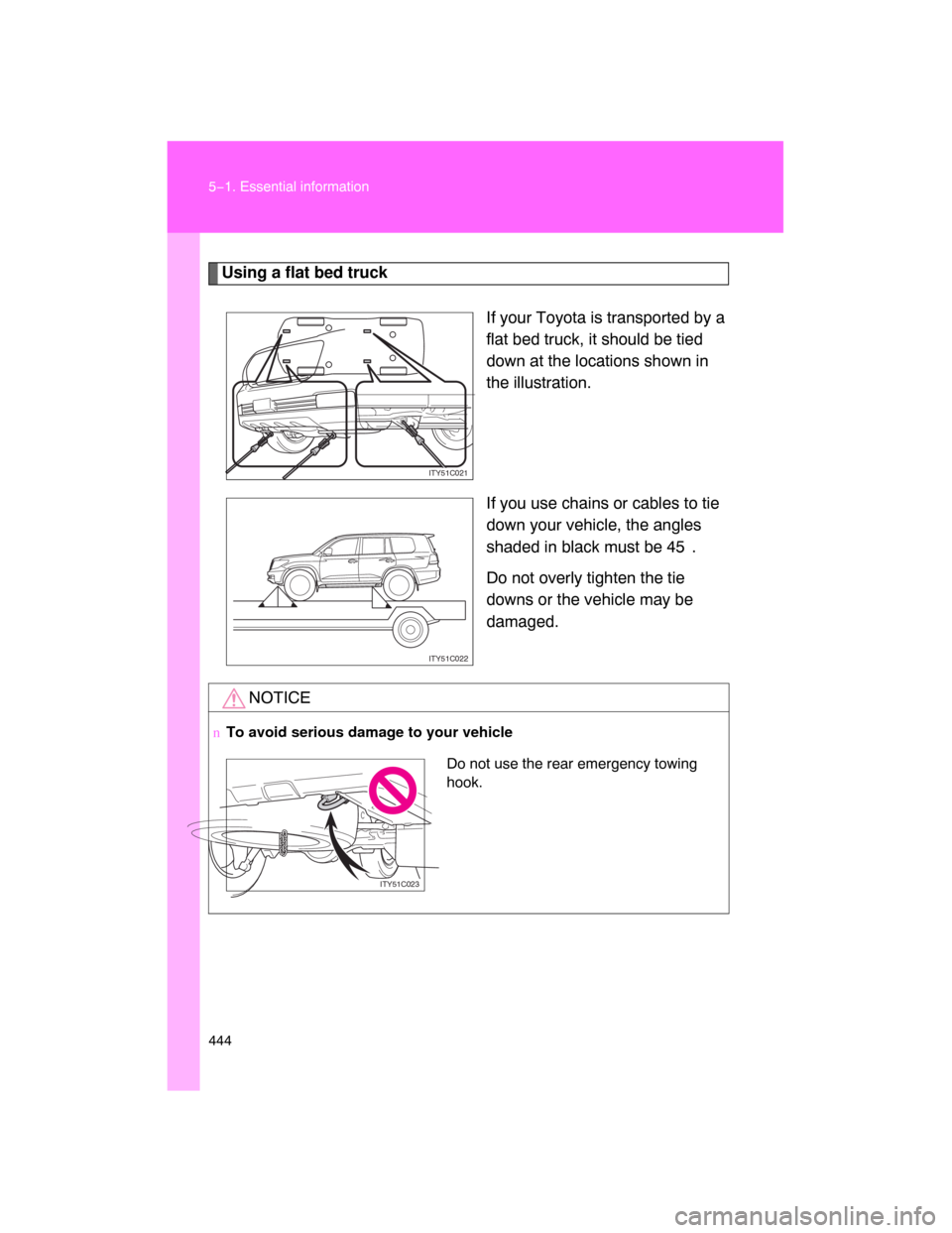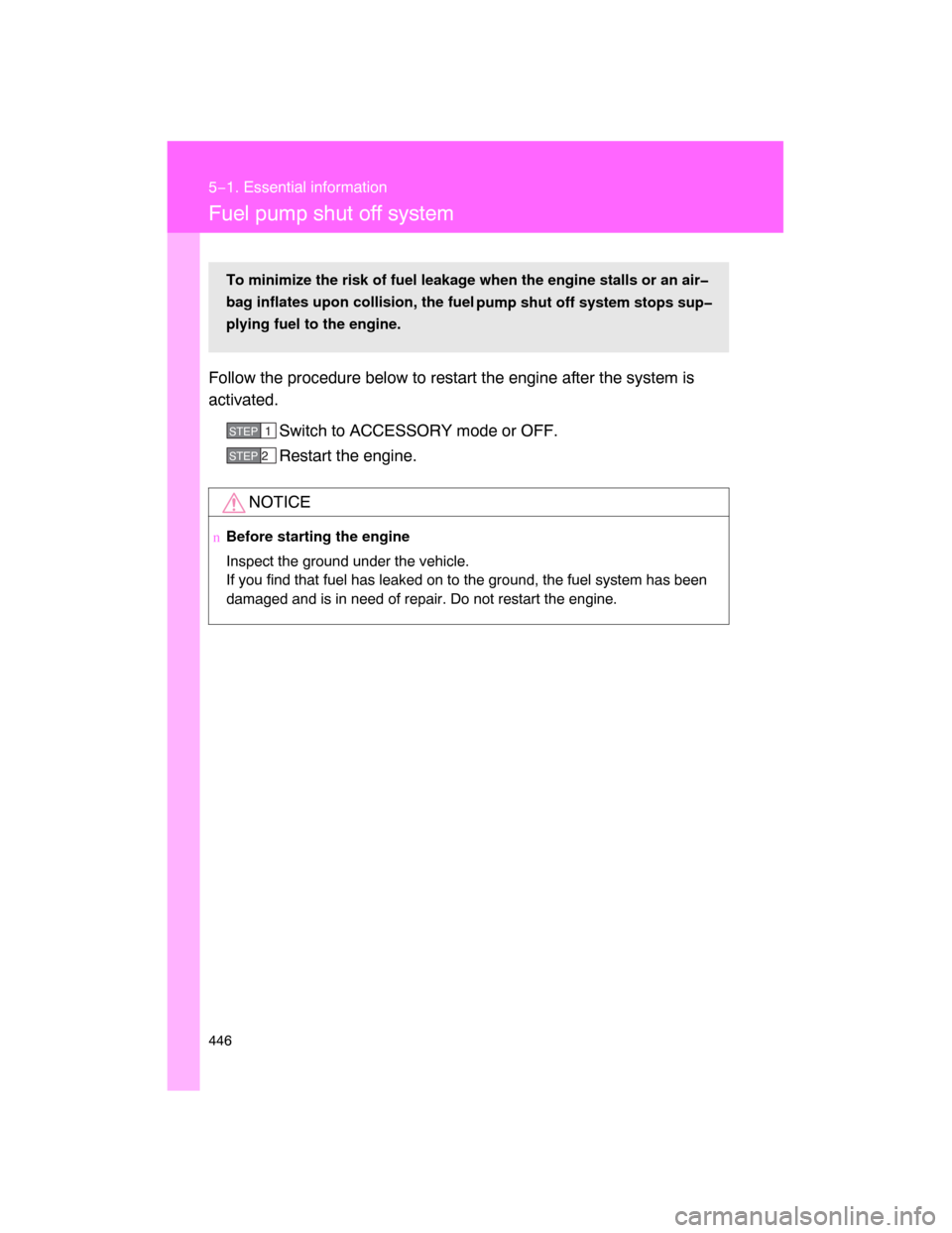TOYOTA LAND CRUISER 2008 J200 Owners Manual
LAND CRUISER 2008 J200
TOYOTA
TOYOTA
https://www.carmanualsonline.info/img/14/6481/w960_6481-0.png
TOYOTA LAND CRUISER 2008 J200 Owners Manual
Trending: parking brake, Ahc, specifications, Fuse, windshield wipers, ad blue, overheating
Page 431 of 531
436 4−3. Do−it−yourself maintenance
nBulbs other than the above
If any of the bulbs listed below
has burnt out, have your Toyota
dealer replace it.
lStop/tail lights
l
Tail lights
l
High mounted stoplight
l
Rear side marker lights
nCondensation build�up on the inside of the lens
Contact your Toyota dealer for more information in the following situations.
Temporary condensation build−up on the inside of the headlight lens does
not indicate a malfunction.
lLarge drops of water are built up on the inside of the lens.
lWater has built up inside the headlight.
nLED light bulbs
The stop/tail, tail, rear side marker and high mounted stoplight consist of a
number of LEDs. If any LEDs burn out, take your vehicle to your Toyota
dealer to have the light replaced.
If two or more LEDs in a stoplight bur
n out, your vehicle may not conform to
local laws (SAE).
Page 432 of 531
437
4−3. Do−it−yourself maintenance
4
Maintenance and care
CAUTION
nReplacing light bulbs
lTurn off the headlights. Do not attempt to replace the bulb immediately
after turning off the headlights.
The bulbs become very hot and may cause burns.
lDo not touch the glass portion of the light bulb with bare hands. Hold the
bulb by the plastic or metal portion.
If the bulb is scratched or dropped it may blow out or crack.
lFully install light bulbs and any parts used to secure them. Failing to do so
may result in heat damage, fire, or water entering the headlight unit. This
may damage the headlights or cause condensation to build up on the lens.
lDo not attempt to repair or disassemble light bulbs, connectors, electric
circuits or component parts.
Doing so may result in death or serious injury due to electric shock.
n
To prevent damage or fire
Make sure bulbs are fully seated and locked.
Page 433 of 531
438 4−3. Do−it−yourself maintenance
Page 434 of 531

440
5−1. Essential information
If your vehicle needs to be towed
Before towing
The following may indicate a problem with your transmission. Contact
your Toyota dealer before towing.
lThe engine is running, but the vehicle will not move.
l
The vehicle makes an abnormal sound.
Emergency towing
If a tow truck is not available in an emergency, your vehicle may be
temporarily towed using a cable or chain secured to the following
part. This should only be attempt
ed on hard, surfaced roads for short
distances at low speeds.
A driver must be in the vehicle to steer and operate the brakes. The
vehicle’s wheels, drive train, axles, steering and brakes must be in
good condition.
Towing hook
If towing is necessary, we recommen d having your vehicle towed by
your Toyota dealer or a commerci
al towing service, using a lift�type
truck or a flat bed truck.
Use a safety chain system for all to
wing, and abide by all state/pro�
vincial and local laws.
Use a towing dolly or flat bed truck.
Page 435 of 531
5
When trouble arises
441 5−1. Essential information
nEmergency towing procedure
The engine must be in ACCESSORY mode (engine off) or IGNI−
TION ON mode (engine running).
Put the four−wheel drive control switch in “H4”. (The center differen−
tial is unlocked.)
Put the shift lever in “N”.
Release the parking brake.
CAUTION
nWhile towing
lUse extreme caution when towing the vehicle.
Avoid sudden starts or erratic driving maneuvers which place excessive
stress on the emergency towing hook and the cable or chain.
lIf the engine is not running, the power assist for the brakes and steering
will not function, making steering and braking more difficult.
NOTICE
nTo prevent causing serious damage to the transmission
lNever tow this vehicle wheels on the ground.
l
Use only the front emergency towing hooks or towing eyelets (depending
on vehicles) when towing your vehicle.
STEP1
STEP 2
STEP 3
STEP 4
Page 436 of 531
442 5−1. Essential information
Towing with a sling�type truck
NOTICE
nTo prevent body damage
Do not tow with a sling type truck, either from the front or rear.
Page 437 of 531
5
When trouble arises
443 5−1. Essential information
Towing with a wheel lift�type truck
From front
Use a towing dolly under the rear
wheels.
From rear
Use a towing dolly under the
front wheels.
NOTICE
nTo prevent causing serious damage to the transmission
Never tow this vehicle wheels on the ground.
nTo prevent damaging the vehicle
lDo not tow the vehicle with the “ENGINE START STOP” switch off.
The steering lock mechanism is not strong enough to hold the front wheel
straight.
l
When raising the vehicle, ensure adequate ground clearance for towing at
the opposite end of the raised vehicle. Without adequate clearance, the
vehicle could be damaged while being towed.
Page 438 of 531
444 5−1. Essential information
Using a flat bed truck
If your Toyota is transported by a
flat bed truck, it should be tied
down at the locations shown in
the illustration.
If you use chains or cables to tie
down your vehicle, the angles
shaded in black must be 45 .
Do not overly tighten the tie
downs or the vehicle may be
damaged.
ITY51C021
ITY51C022
NOTICE
nTo avoid serious damage to your vehicle
Do not use the rear emergency towing
hook.
ITY51C023
Page 439 of 531
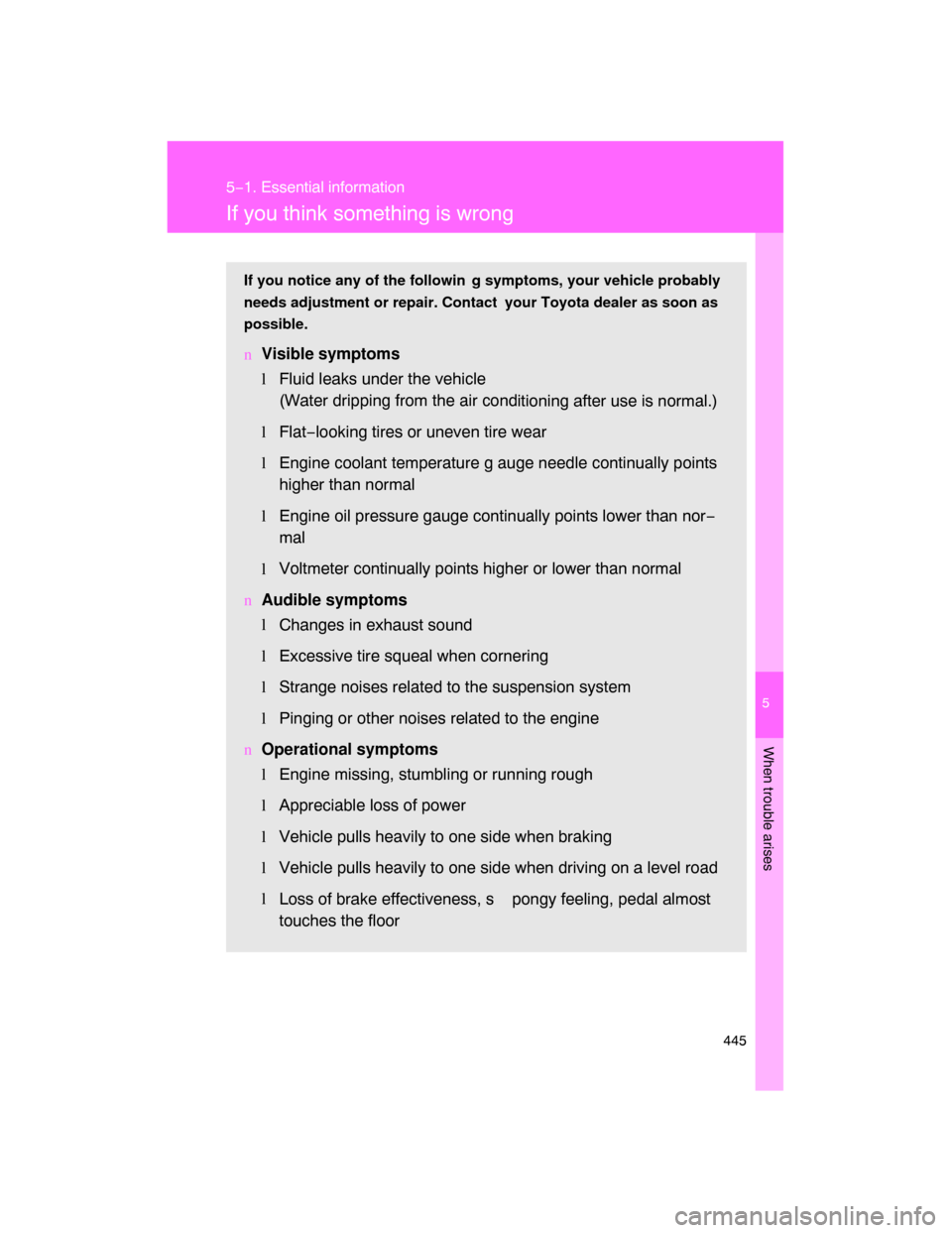
5
When trouble arises
445
5−1. Essential information
If you think something is wrong
If you notice any of the followin g symptoms, your vehicle probably
needs adjustment or repair. Contact your Toyota dealer as soon as
possible.
nVisible symptoms
lFluid leaks under the vehicle
(Water dripping from the air cond
itioning after use is normal.)
lFlat−looking tires or uneven tire wear
lEngine coolant temperature g auge needle continually points
higher than normal
lEngine oil pressure gauge continually points lower than nor−
mal
lVoltmeter continually points higher or lower than normal
n
Audible symptoms
l
Changes in exhaust sound
lExcessive tire squeal when cornering
l
Strange noises related to the suspension system
l
Pinging or other noises related to the engine
nOperational symptoms
l
Engine missing, stumbling or running rough
l
Appreciable loss of power
lVehicle pulls heavily to one side when braking
l
Vehicle pulls heavily to one side when driving on a level road
l
Loss of brake effectiveness, s pongy feeling, pedal almost
touches the floor
Page 440 of 531
446
5−1. Essential information
Fuel pump shut off system
Follow the procedure below to restart the engine after the system is
activated.
Switch to ACCESSORY mode or OFF.
Restart the engine.
NOTICE
nBefore starting the engine
Inspect the ground under the vehicle.
If you find that fuel has leaked on to the ground, the fuel system has been
damaged and is in need of repair. Do not restart the engine.
To minimize the risk of fuel leakage when the engine stalls or an air�
bag inflates upon collision, the fuel
pump shut off system stops sup�
plying fuel to the engine.
STEP1
STEP 2
Trending: inflation pressure, headlight bulb, run flat, winter tires, wiper fluid, fuses, open hood
